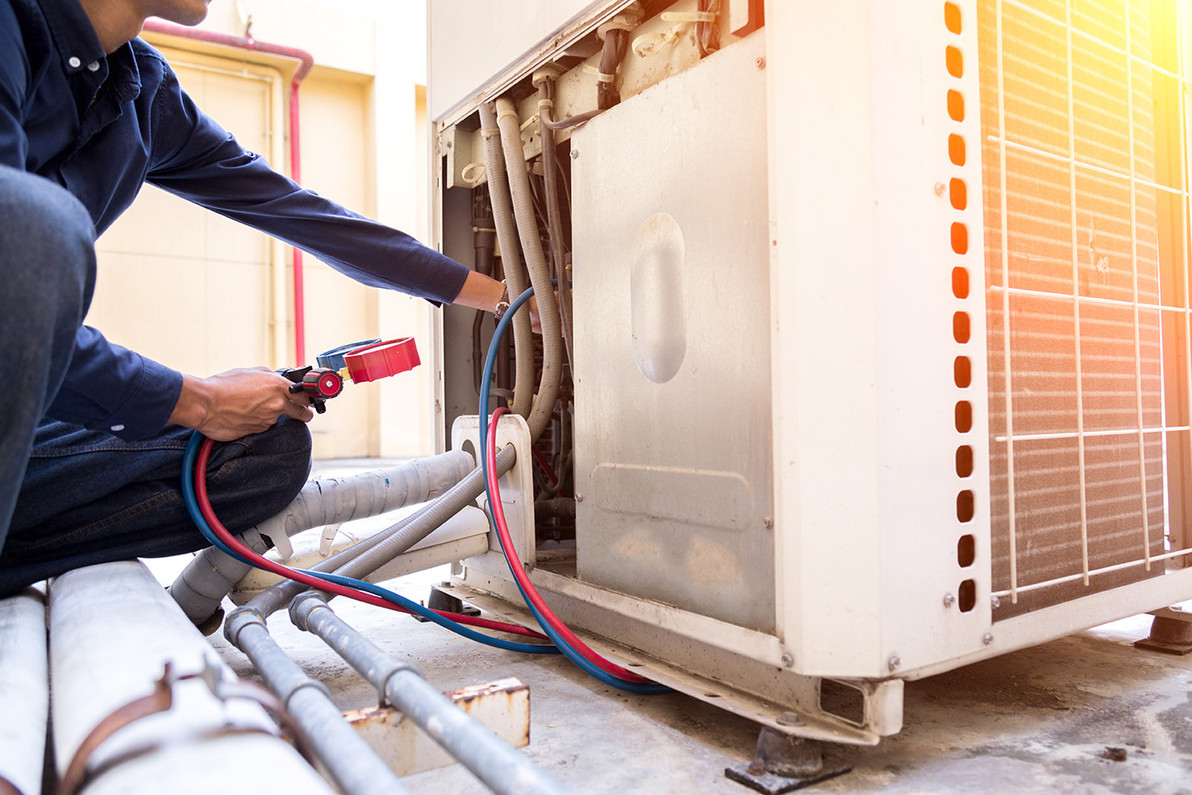R410a Refrigerant: Everything You Need to Know
R410a is a hydrofluorocarbon (HFC) refrigerant used in various air conditioning and refrigeration systems. This refrigerant is a combination of R32 and R125. It is seen as a more eco-friendly option compared to others, like R22.
R410a has several advantages over other refrigerants. It is more efficient and can cool or heat a space more effectively using less energy. It is also less flammable at ambient temperatures and less likely to contribute to ozone depletion. Additionally, R410a is a non-toxic refrigerant, so it is generally safe to use in homes and businesses.
How does R410a work?
R410a works by absorbing heat from the air inside a building and then releasing it to the atmosphere outside. This process is called the refrigeration cycle.
The refrigerant is pumped through a series of coils, where it absorbs heat from the air inside the building. The hot refrigerant then flows to the compressor, where it is compressed and heated. The heated refrigerant then flows to the condenser, releasing heat to the air outside. The cooled, compressed refrigerant then flows back to the evaporator, where the cycle begins again.
Why is R410a a more environmentally friendly refrigerant?
R410a is considered a more environmentally friendly refrigerant compared to R22 due to several key reasons. Firstly, R410a does not contain chlorine, unlike R22, which is an ozone-depleting substance.
Chlorine compounds damage the ozone layer. This layer is essential in shielding us from dangerous ultraviolet radiation. By eliminating chlorine from its composition, R410a significantly reduces the potential for ozone layer depletion.
Secondly, R410a has a lower global warming potential (GWP) than R22. GWP stands for "Greenhouse Warming Potential". It measures the amount of heat a particular substance traps in the atmosphere over a given period. This measurement is then compared to the same measurement of carbon dioxide.
R410a has a GWP of around 2,088, significantly lower than R22's GWP of approximately 1,760. Lower GWP means that R410a has a lesser impact on global warming and climate change compared to R22.
What are the disadvantages of R410a?
While R410a is considered a more environmentally friendly refrigerant, it does have some disadvantages worth considering:
Higher operating pressures: R410a operates at significantly higher pressures than R22. Air conditioning and refrigeration systems designed for R22 need modifications or upgrades to use R410a. This is because R410a has higher pressures than R22. This can result in increased costs for equipment replacement or retrofitting.
Incompatibility with R22 systems: R410a cannot be used as a direct replacement for R22 in existing systems. The differences in operating pressures and lubricant requirements necessitate equipment modifications or replacements. This can be costly, especially for older systems that may need significant upgrades or replacements to accommodate R410a.
Limited availability and higher cost: As R410a becomes more popular and widely adopted, the demand for this refrigerant has increased. However, it may still be less readily available compared to R22, which has been phased out in many countries. Additionally, R410a can be more expensive than other refrigerants due to its higher demand and production costs.
Is R410a safe?
R410a is generally considered safe when handled and used properly. However, it's important to follow appropriate safety measures to minimize any potential risks associated with this refrigerant. Here are some key points regarding the safety of R410a:
- Inhalation: R410a is not toxic, but it can be harmful if inhaled in large amounts. Symptoms of inhalation can include dizziness, nausea, and vomiting.
- Skin contact: R410a can cause skin irritation.
- Eye contact: R410a can cause eye irritation.
If you have any questions about the safety of R410a, consult with a qualified HVAC technician.
What are the future trends for R410a?
The future trends for R410a are expected to be positive. R410a is a more environmentally friendly refrigerant than R22, and it is becoming increasingly popular as a result. The global market for R410a is expected to grow at a CAGR of 3.0% from 2023 to 2029.
Here are some of the key factors that are driving the growth of the R410a market:
- The phase-out of R22: R22 is a hydrochlorofluorocarbon (HCFC) refrigerant, which is being phased out due to its ozone-depleting properties. This is creating a demand for more environmentally friendly refrigerants, such as R410a.
- The growth of the air conditioning and heat pump market: The global air conditioning and heat pump market is growing at a rapid pace. This is due to the increasing demand for energy-efficient and environmentally friendly products. R410a is a popular choice for air conditioning and heat pump systems due to its high efficiency and environmental friendliness.
- The development of new technologies: There are a number of new technologies that are being developed that could further improve the performance and efficiency of R410a systems. These technologies could help to further drive the growth of the R410a market in the future.
R410a, Superior Performance and a Reduced Impact on Climate Change
With its superior performance and reduced impact on climate change, R410a is playing a vital role in the transition towards a more sustainable and eco-conscious future. By embracing R410a and staying informed about future developments, we can contribute to a greener and healthier planet for generations to come.
If you're considering purchasing R410a refrigerant or a r410a small can, Budget Air Supply offers a 1.8 LBS Cylinder/Can R410A with Easy Recharge Hose and Gauge.
Recent Posts
-
The Goodman 96% AFUE 60k BTU Gas Furnace (GVMC960603BN)
When it comes to keeping your home warm and cozy, a reliable and efficient furnace is not just a nec …12th May 2024 -
The 2023 Rheem 2.5 Ton 15.2 SEER2 Straight Cool Split System
If you happen to live in a place with scorching summers, you know the struggle is real when the sun …5th May 2024 -
Cooling on a Budget: Why Buy Your HVAC Unit Wholesale?
Imagine this: the Florida summer sun is beating down, and your air conditioner decides to take a vac …28th Apr 2024




